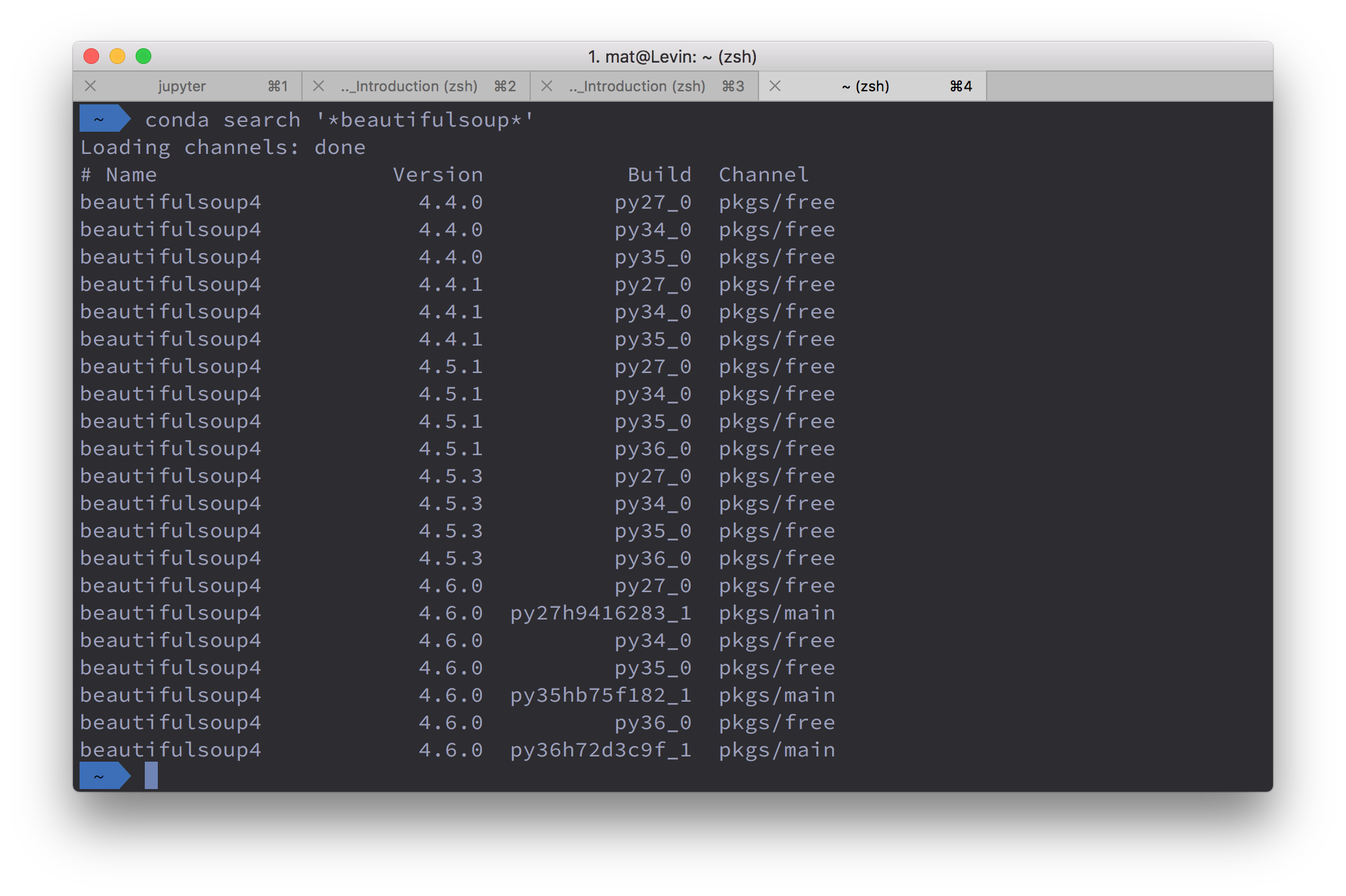04. Managing packages
Managing Packages
Once you have Anaconda installed, managing packages is fairly straightforward. To install a package, type conda install package_name in your terminal. For example, to install numpy, type conda install numpy.
You can install multiple packages at the same time. Something like conda install numpy scipy pandas will install all those packages simultaneously. It's also possible to specify which version of a package you want by adding the version number such as conda install numpy=1.10.
Conda also automatically installs dependencies for you. For example scipy depends on numpy, it uses and requires numpy. If you install just scipy (conda install scipy), Conda will also install numpy if it isn't already installed.
Most of the commands are pretty intuitive. To uninstall, use conda remove package_name. To update a package conda update package_name. If you want to update all packages in an environment, which is often useful, use conda update --all. And finally, to list installed packages, it's conda list which you've seen before.
If you don't know the exact name of the package you're looking for, you can try searching with conda search *search_term*. For example, I know I want to install Beautiful Soup, but I'm not sure of the exact package name. So, I try conda search *beautifulsoup*. Note that your shell might expand the wildcard * before running the conda command. To fix this, wrap the search string in single or double quotes like conda search '*beautifulsoup*'.

It returns a list of the Beautiful Soup packages available with the appropriate package name, beautifulsoup4.
SOLUTION:
- `conda install pandas`
- `conda install numpy pandas`